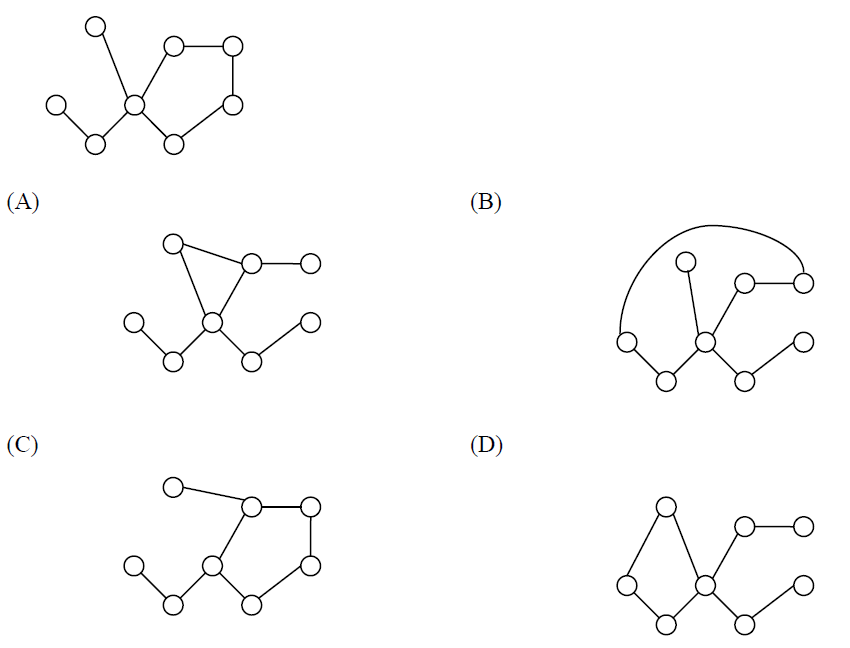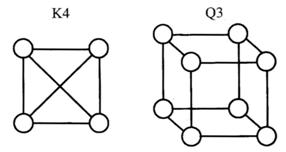Top MCQs on Graph Theory in Mathematics
Question 1
Consider an undirected random graph of eight vertices. The probability that there is an edge between a pair of vertices is 1/2. What is the expected number of unordered cycles of length three?
Question 2
Which of the following statements is/are TRUE for undirected graphs?
P: Number of odd degree vertices is even. Q: Sum of degrees of all vertices is even.
Question 3
(P) The line graph of a cycle is a cycle. (Q) The line graph of a clique is a clique. (R) The line graph of a planar graph is planar. (S) The line graph of a tree is a tree.
Question 4
Let G be a simple undirected planar graph on 10 vertices with 15 edges. If G is a connected graph, then the number of bounded faces in any embedding of G on the plane is equal to
Question 6
Let G be a complete undirected graph on 6 vertices. If vertices of G are labeled, then the number of distinct cycles of length 4 in G is equal to
Question 8
Question 9
The degree sequence of a simple graph is the sequence of the degrees of the nodes in the graph in decreasing order. Which of the following sequences can not be the degree sequence of any graph?
(I) 7, 6, 5, 4, 4, 3, 2, 1 (II) 6, 6, 6, 6, 3, 3, 2, 2 (III) 7, 6, 6, 4, 4, 3, 2, 2 (IV) 8, 7, 7, 6, 4, 2, 1, 1
Question 10
What is the chromatic number of an n-vertex simple connected graph which does not contain any odd length cycle? Assume n >= 2.
There are 91 questions to complete.


